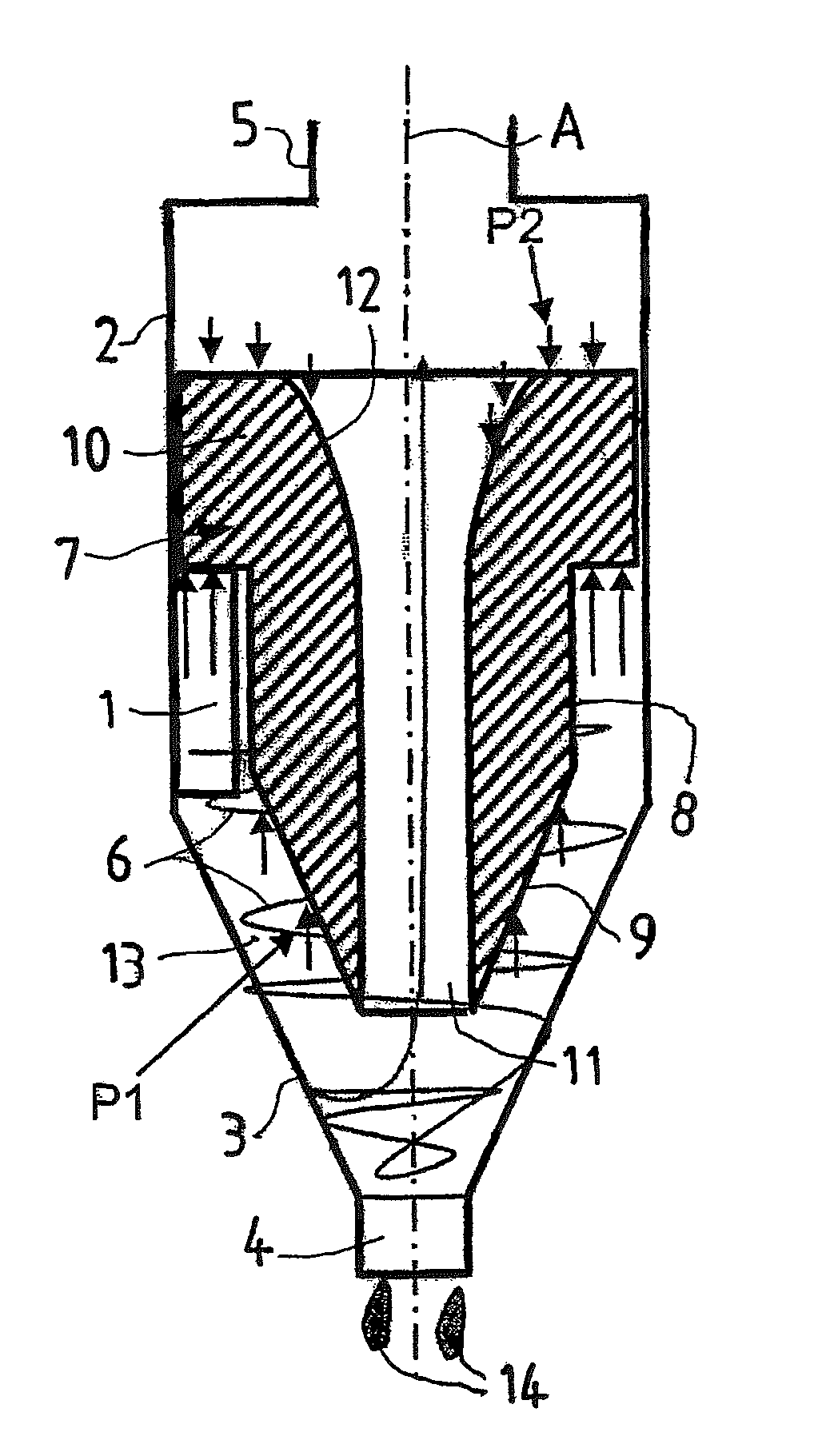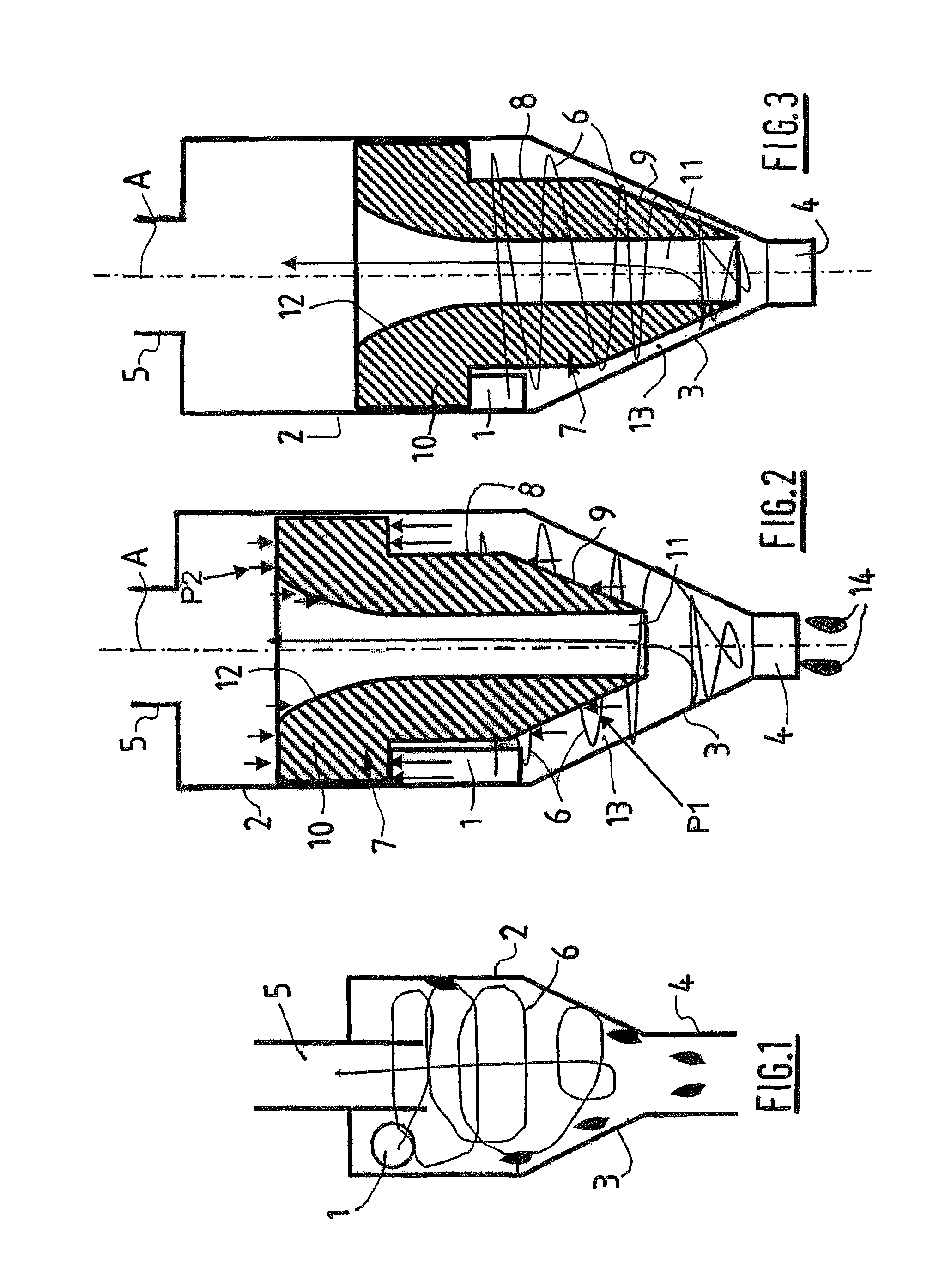Cyclone separator device for gas-oil separation
a technology of gas-oil separation and separator, which is applied in the direction of separation process, filtration separation, auxillary pretreatment, etc., can solve the problems of pressure drop, increase the flow speed, and not provide a satisfactory solution, so as to improve the lift, improve the control of the gas speed, and increase the pressure
- Summary
- Abstract
- Description
- Claims
- Application Information
AI Technical Summary
Benefits of technology
Problems solved by technology
Method used
Image
Examples
Embodiment Construction
[0045]FIGS. 2 and 3 depict a cyclone separator device the fixed part of which corresponds to the structure of a conventional cyclone and comprises, from top to bottom: an upper tangential inlet 1 for the gases containing the oil that is to be removed, a cylindrical zone 2 for collecting the oil droplets, a conical zone 3 for recovering the oil droplets and a lower oil outlet zone 4. The cyclone also comprises, at its top, an upper axial gas outlet opening 5, to which a suction pipe (not depicted) can be connected.
[0046]A body of revolution 7 of cylindro-conical overall shape is mounted, such that it can move vertically and also such that it is free to turn, inside the cyclone. The body 7 has a cylindrical part 8 situated in register with the cylindrical collection zone 2, and a conical lower part 9 situated in register with the conical recovery zone 3. The body 7 also has a larger-diameter upper zone 10 situated at the level of the upper tangential inlet 1. The body 7 is pierced ver...
PUM
| Property | Measurement | Unit |
|---|---|---|
| flow rate | aaaaa | aaaaa |
| speed | aaaaa | aaaaa |
| symmetry | aaaaa | aaaaa |
Abstract
Description
Claims
Application Information
 Login to View More
Login to View More - R&D
- Intellectual Property
- Life Sciences
- Materials
- Tech Scout
- Unparalleled Data Quality
- Higher Quality Content
- 60% Fewer Hallucinations
Browse by: Latest US Patents, China's latest patents, Technical Efficacy Thesaurus, Application Domain, Technology Topic, Popular Technical Reports.
© 2025 PatSnap. All rights reserved.Legal|Privacy policy|Modern Slavery Act Transparency Statement|Sitemap|About US| Contact US: help@patsnap.com



